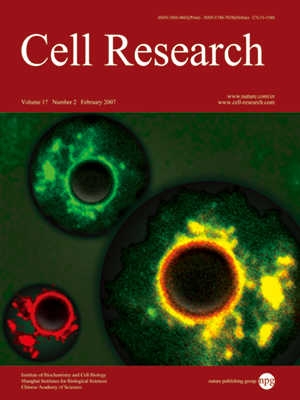
Volume 17, No 2, Feb 2007
ISSN: 1001-0602
EISSN: 1748-7838 2018
impact factor 17.848*
(Clarivate Analytics, 2019)
Volume 17 Issue 2, February 2007: 174-183
ORIGINAL ARTICLES
Functional analysis of a cotton glucuronosyltransferase promoter in transgenic tobaccos
Ai-Min Wu1, Shi-You Lü, Jin-Yuan Liu
1Laboratory of Molecular Biology and Protein Science Laboratory of the Ministry of Education, Department of Biological Sciences and Biotechnology, Tsinghua University, Beijing 100084, China
Correspondence: Jin-Yuan Liu(liujy@mail.tsinghua.edu.cn)
The 5' fragment (1 647 bp) of the cotton glucuronosyltransferase gene (GhGlcAT1) was transcriptionally fused to the b-glucuronidase (GUS) gene, and functionally analyzed for important regulatory regions controlling gene expression in transgenic tobacco plants. GUS activity analysis revealed that the full-length promoter drives efficient expression of the GUS gene in the root cap, seed coat, pollen grains and trichomes. Exposure of the transgenic tobacco to various abiotic stresses showed that the promoter was mainly responsive to the sugars (glucose and sucrose) as well as gibberellic acid. Progressive upstream deletion analyses of the promoter showed that the region from –281 to +30 bp is sufficient to drive strong GUS expression in the trichomes of shoot, suggesting that the 311 bp region contains all cis-elements needed for trichome-specific expression. Furthermore, deletion analysis also revealed that the essential cis-element(s) for sucrose induction might be located between –635 and –281 bp. In addition, sequence analysis of the regulatory region indicated several conserved motifs among which some were shared with previously reported seed-specific elements and sugarresponsive elements, while others were related with trichome expression. These findings indicate that a 1 647-bp fragment of the cotton GhGlcAT1 promoter contains specific transcription regulatory elements, and provide clues about the roles of GhGlcAT1 in cotton fiber development. Further analyses of these elements will help to elucidate the molecular mechanisms regulating the expression of the GhGlcAT1 gene during fiber elongation.
Cell Research (2007) 17:174-183. doi: 10.1038/sj.cr.7310119; published 19 December 2006.
FULL TEXT | PDF
Browse 2033


